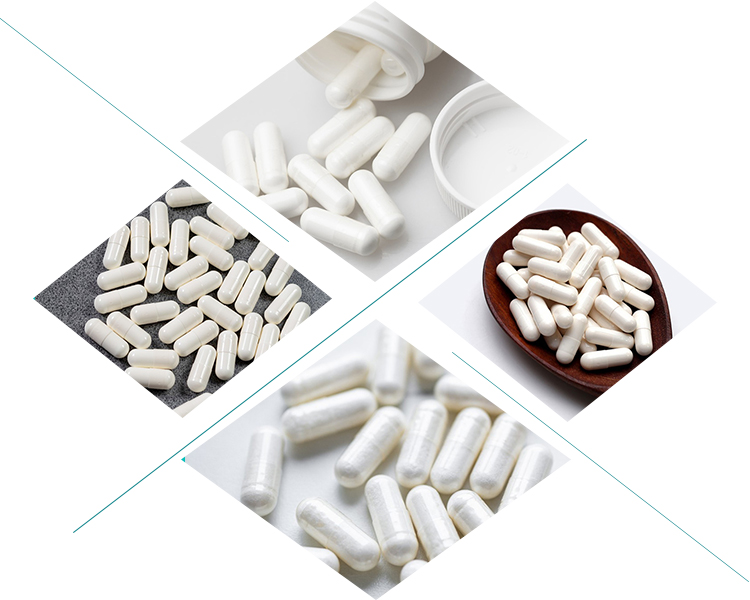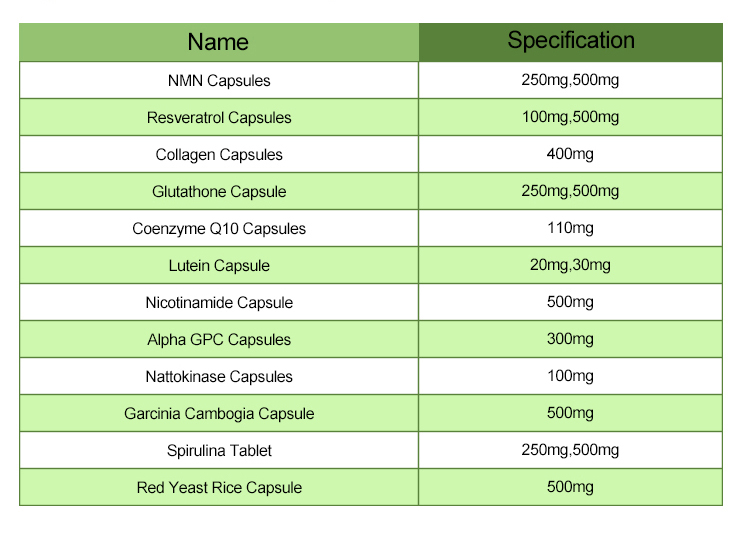The materials and methods for producing resveratrol capsules typically involve several steps, including sourcing the raw materials, extraction of resveratrol, formulation, encapsulation, and packaging. Here’s a general outline of the process:
Materials of Resveratrol Capsules:
1.Raw Materials:
Polygonum cuspidatum (Japanese knotweed) or Vitis vinifera (grapevine) extracts rich in resveratrol.
Excipients (inactive ingredients) such as fillers, binders, and lubricants.
Capsule shells (typically made of gelatin or vegetarian alternatives like cellulose).
2.Solvents:
Ethanol or methanol for extraction (though methods avoiding toxic solvents are preferred).

Methods of Resveratrol Capsules:
1.Extraction:
Obtain plant material (e.g., Japanese knotweed or grape skins).
Grind or crush the plant material to increase surface area.
Extract resveratrol using a suitable solvent (e.g., ethanol or methanol) through techniques like maceration, Soxhlet extraction, or supercritical fluid extraction.
Concentrate the extract through methods like evaporation or filtration to obtain a higher concentration of resveratrol.
2.Purification (optional):
Purify the extracted resveratrol to remove impurities or unwanted compounds using techniques such as chromatography.
3.Formulation:
Combine the purified resveratrol extract with excipients to create a homogenous mixture.
Excipients help in improving stability, flowability, and ease of encapsulation.
4.Encapsulation:
Fill the formulated mixture into empty capsules using encapsulation machines.
Capsules can be hard gelatin capsules or vegetarian alternatives like cellulose-based capsules.
The filling process ensures accurate dosing and uniform distribution of resveratrol in each capsule.

5.Quality Control:
Test the final product for potency, purity, and microbial contamination.
Ensure that the capsules meet regulatory standards for dietary supplements.
6.Packaging:
Package the filled capsules into bottles or blister packs.
Label the packaging with product information, including dosage instructions, ingredients, and warnings.
Store the packaged capsules in appropriate conditions to maintain stability and shelf life.
7.Regulatory Compliance:
Ensure compliance with regulatory requirements for dietary supplements in the target market, including labeling regulations and quality standards.
8.Distribution:
Distribute the packaged resveratrol capsules through appropriate channels, such as pharmacies, health food stores, or online platforms.
It’s important to note that specific methods and materials may vary depending on the manufacturer, formulation, and regulatory requirements in different regions. Additionally, manufacturers may employ proprietary techniques or ingredients to differentiate their products.
